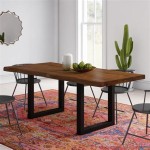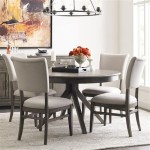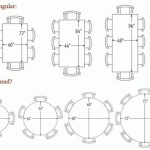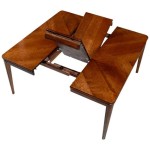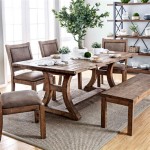Table Tennis Conversion Top For Dining Tables: Transforming Your Space
A table tennis conversion top for dining tables represents a practical solution for those seeking to enjoy the benefits of table tennis without dedicating a specific room for a permanent table. This adaptable accessory transforms an existing dining table into a functional playing surface, offering convenience and space-saving advantages. The design and construction of these conversion tops are crucial factors in determining their playability, stability, and overall user experience.
The primary function of a table tennis conversion top is to provide a regulation-sized playing area that adheres to the standards set by international table tennis federations. While compromises may exist in terms of bounce and overall playing experience compared to a dedicated table tennis table, a well-designed conversion top can offer a satisfying and competitive game. The selection process involves careful consideration of several key factors, including the dimensions, construction materials, ease of setup, and storage.
The appeal of a table tennis conversion top lies in its versatility. Individuals living in apartments, smaller homes, or those who simply prefer a multi-functional space can benefit from this adaptable sports equipment. The ability to quickly convert a dining table into a table tennis area allows for spontaneous games and social gatherings, promoting physical activity and entertainment without the commitment of a permanently installed table.
Key Considerations in Selecting a Table Tennis Conversion Top
The selection of a suitable table tennis conversion top requires careful consideration of several key features. These features directly impact the playing experience, the longevity of the product, and the overall convenience of use. Three primary aspects merit particular attention: table top thickness and material, support structure and stability, and ease of assembly and storage.
First, the thickness and material of the table top are crucial for ensuring a consistent and predictable ball bounce. Thicker tops generally provide a better bounce, mimicking the performance of a professional table tennis table. The material composition also plays a significant role; medium-density fiberboard (MDF) is a common choice due to its affordability and relative flatness. However, higher-quality options may incorporate composite materials or specialized coatings to enhance the bounce characteristics and durability of the surface. The surface should also be free of any irregularities or blemishes that could affect the ball's trajectory.
Second, the support structure and stability of the conversion top are paramount for safe and enjoyable gameplay. The support structure typically consists of a frame or a series of crossbars designed to distribute weight evenly across the dining table and prevent warping or sagging of the playing surface. Look for conversion tops with robust support systems constructed from metal or reinforced wood. Furthermore, the inclusion of padding or non-slip materials on the underside of the conversion top is essential to protect the surface of the dining table from scratches and damage. The stability of the conversion top should be tested to ensure that it remains securely in place during vigorous gameplay.
Third, the ease of assembly and storage are practical considerations that should not be overlooked. Conversion tops that are quick and easy to set up and take down encourage more frequent use. Look for models that feature a simple folding mechanism or a minimal number of components requiring assembly. Furthermore, consider the storage requirements of the conversion top when it is not in use. Some models fold compactly for easy storage in a closet or against a wall, while others may require more substantial storage space. The weight of the conversion top is also a factor to consider, particularly if it will be frequently moved or transported.
Dimensions and Compatibility with Dining Tables
Ensuring compatibility between the table tennis conversion top and the intended dining table is a critical step in the selection process. Standard table tennis table dimensions dictate the size requirements for conversion tops, and understanding these measurements is essential for a successful fit. Furthermore, evaluating the dining table's dimensions, weight capacity, and surface material is crucial for assessing its suitability as a base for the conversion top.
The official dimensions of a table tennis table, as defined by the International Table Tennis Federation (ITTF), are 9 feet long, 5 feet wide, and 30 inches high. Table tennis conversion tops are designed to replicate these dimensions when placed on a suitable dining table. Before purchasing a conversion top, accurately measure the dimensions of the dining table to ensure that it can accommodate the size of the conversion top. Leave some overhang for comfortable play, but make sure the overhang is not too much to cause any stability issues.
The weight capacity of the dining table is another important factor to consider. Table tennis conversion tops can be quite heavy, particularly those constructed from thicker materials or featuring robust support structures. Consult the manufacturer's specifications for the weight of the conversion top and compare it to the dining table's weight capacity. Exceeding the weight capacity of the dining table could result in damage to the table or instability of the playing surface. Distribute the weight evenly across the dining table by making sure the supporting structure of the conversion top does not concentrate all the weight in a specific area.
The surface material of the dining table should also be evaluated for its compatibility with the conversion top. Delicate or easily scratched surfaces, such as polished wood or glass, may require additional protection to prevent damage from the conversion top's support structure. Consider using padding or protective sheets to shield the dining table's surface. Additionally, ensure that the dining table's surface is relatively level to provide a consistent playing surface for table tennis. Use shims or adjustable feet to level the dining table if necessary.
Maintenance and Care for Longevity
Proper maintenance and care are essential for prolonging the lifespan and maintaining the performance of a table tennis conversion top. Regular cleaning, careful storage, and preventative measures can help to protect the playing surface from damage and ensure consistent ball bounce. Neglecting these aspects can lead to warping, scratches, or other issues that negatively impact the playing experience and shorten the lifespan of the conversion top. These maintenance aspects can be grouped into cleaning and surface protection and, as well as proper storage techniques.
Regular cleaning of the table tennis conversion top is crucial for removing dust, dirt, and other debris that can accumulate on the playing surface. Use a soft, damp cloth to gently wipe down the surface after each use. Avoid using harsh chemicals or abrasive cleaners, as these can damage the finish and affect the ball bounce. For stubborn stains or marks, a mild soap solution may be used, but be sure to rinse thoroughly and dry the surface completely. It is also important to regularly inspect the surface for scratches or imperfections and address any minor damage promptly to prevent it from worsening over time. Applying a specialized table tennis table cleaner can also help to maintain the surface's playing characteristics.
Proper storage of the table tennis conversion top is equally important for preventing damage and maintaining its shape. When not in use, store the conversion top in a dry, climate-controlled environment away from direct sunlight and extreme temperatures. Exposure to moisture or heat can cause warping or cracking of the playing surface. If the conversion top folds for storage, ensure that it is properly secured in the folded position to prevent accidental unfolding or damage to the hinges or folding mechanism. Consider using a protective cover to shield the conversion top from dust and scratches during storage. If storing the conversion top against a wall, ensure that it is properly supported to prevent it from falling over and causing damage.
Preventative measures can also help to extend the lifespan of the table tennis conversion top. Avoid placing heavy objects on the playing surface, as this can cause warping or damage. Be careful when setting up or taking down the conversion top to avoid scratching or denting the surface. Avoid leaving the conversion top exposed to the elements for extended periods, as this can accelerate wear and tear. Regularly inspect the support structure for any signs of damage or wear and address any issues promptly. By following these simple preventative measures, one can ensure that the table tennis conversion top remains in good condition for years to come.

Classic Table Tennis Conversion Top

9 X 5 Tournament Standard Size Table Tennis Tops For Your Superpool Uk

Ct8 Table Tennis Conversion Top Brunswick Billiards

Classic Table Tennis Conversion Top

Ct7 Table Tennis Conversion Top Brunswick Billiards

Cornilleau Indoor Table Tennis Conversion Top

Stiga 4 Piece Table Tennis Conversion Top Wal Com

Table Tennis Conversion Top For Billiards

Mako Dining Table Tennis Conversion For 6ft Tables

Convertible Pool Table Tennis Presidential Billiards

